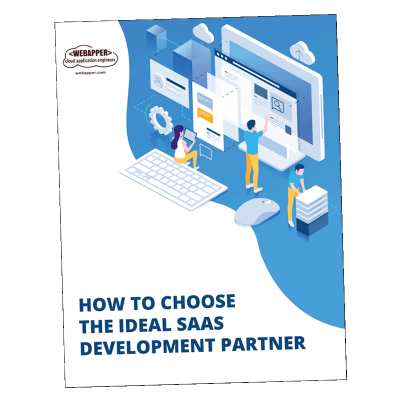Competitive SaaS Branding Analysis
How to Beat Your Rivals
If you occasionally glance at a competitor’s site and think, “Why didn’t we think of that?” Have you read another “AI-powered, future-ready” G2 review and wondered if anyone can tell the difference between SaaS brands? SaaS positioning is challenging, and most organizations end up blending into one big, forgettable moshpit. We discuss SaaS branding to see how we can stand out, especially with the cluttered surge in AI-powered SaaS.
“Most of us are replacing something… And so it needs to be very clear. Why choose you over the status quo, over the category leader?”
Stop Copycat Branding
If you occasionally glance at a competitor’s site and think, “Why didn’t we think of that?” Read another “AI-powered, future-ready” G2 review and wonder if anyone can actually tell the difference between SaaS brands? SaaS positioning is extremely challenging, and most organizations end up blending into one big, forgettable moshpit. We need to discuss SaaS branding to see how we can stand out, especially with the cluttered surge in AI-powered SaaS.
Succeeding in SaaS isn’t about who has the most features. It’s about having a brand that stands out.. Most SaaS teams need more than a cool logo and a clever tagline. Are you still asking, “Is our positioning unique?” or “What are we missing that’s obvious to everyone else?” If so, it’s time to level up your SaaS competitive analysis. Let’s get into how the best SaaS brands dissect the competition.
Why Most SaaS Competitive Analysis Flops
A “glance-and-guess” approach might feel quick, but here’s it usually sabotages SaaS brands…
- Tunnel Vision
Internal teams are so close to their product, they miss how outsiders judge their messaging. Customers care about what a brand means—not just the bells and whistles. - Too many priorities, not enough resources
Most SaaS CMOs juggle demand gen, branding, and (limited) competitive research. Deep dives get cut, so analysis stays shallow - Markets move faster than ever
New rivals and pivots happen quarterly or faster. Miss a positioning shift, and suddenly you’re the “old school” brand. - Data overload
Collecting 50 screenshots of competitor sites won’t direct your team to better messaging. Frameworks matter; random data does not.
Mess this up and the results hurt: long sales cycles, prospects challenging pricing, and deals lost to “shiny” competitors, even when your product does more.
A Simple Framework for SaaS Branding Analysis
Stop collecting competitor facts in scattered spreadsheets (we did it too…). Use this three-part framework for SaaS competitive analysis.
- Audit & Map
Go deep, not wide. Review competitors’ brand assets, messaging, and design systematically. - Identify & Evaluate
Look for “white space.” Find market positions or stories no one else owns. - Strategize & Differentiate
Turn findings into bold, clear positioning moves that set the stage for faster wins.
This isn’t busywork. It’s actionable, repeatable, and can reposition your brand’s role in your market.
Why It Works for SaaS
SaaS markets move fast! This approach is built for B2B complexity, keeps up with evolving markets (in weeks, not months), and focuses on ROI over vanity metrics. Repeat each quarter for maximum effect.
Step-by-Step Guide to SaaS Competitive Branding
Step 1. Define Your Competitive Set
Think beyond just the companies on your RADAR right now. Map:
- Direct competitors (same ICP)
- Indirect competitors (alternative solutions)
- Aspirational brands (maybe in adjacent sectors but nailing positioning)
- New or emerging threats (startups or pivots catching buzz)
Use G2, Capterra, and lost-deal notes in your CRM. Ask sales for the “underdogs” they hear about.
Step 2. Run Deep Brand Audits
Don’t skim homepages. Dissect them. Look for:
- Messaging
Audit positioning statements, personality, and proof points. - Visuals
Logos, color use, site layout—how do they “feel” at a glance? - Content
What blog and social themes do they own? What stories do they tell in case studies? - Proof
Customer logos, testimonials, and any proof of results (or lack thereof).
Step3. Map the Battlefield
Make a few quick charts…
- Is anyone positioned at the “premium, complex” end vs. “affordable, simple”?
- Who targets niche verticals versus everyone?
- Where does messaging overlap?
Positioning maps (price vs. features; ease of use vs. complexity) highlight crowded segments and real opportunities for a new brand story.
Step 4. Spot the Gaps
For each big competitor, run a quick SWOT analysis…
- Strengths & weaknesses in branding/personality (not just features).
- What customers complain about, from public reviews or social media.
- Where the “white space” is — messaging or audience segments others ignore.
Pro tip: Use customer interviews, not just analyst guesses, to find the real gaps.
Step 5. Build Your Own Playbook
Now, prioritize moves for your solution.
- Which white space offers the biggest, easiest wins?
- How can you reposition, double down on differentiation, or fix your messaging?
- Plan for both quick wins and deeper, longer-term brand initiatives
With SaaS AI tools everywhere, make sure your angle is about making AI work in the real world. Avoid saying “we have AI too”.
Pro Moves for SaaS Branding
- Revise quarterly
The market won’t stand still, and neither should your analysis. - Spy smarter
Tools like SimilarWeb, Ahrefs, SEMrush, and Sparktoro can help you determine where competitors win digital mindshare. - Listen to real buyers
Debrief with lost deals for the true story on what made a difference. - Loop in sales
Their competitive insights are pure gold. Use them. - Document everything
A shared competitive intelligence doc keeps messaging tight and teams on the same page.
Getting Started with SaaS Branding Analysis
Copying what works is weak. Winners find the gaps, write the story, and execute. Brands that do this grow revenue and shorten sales cycles.
Transform Your Brand From Forgettable to Formidable
Stop blending into the “AI-powered, future-ready” SaaS moshpit. A systematic competitive branding analysis transforms your positioning from copycat to category leader. By defining your competitive set, running deep brand audits, mapping the battlefield, spotting gaps, and building your playbook, you’ll discover white space opportunities that rivals miss. The framework—Audit & Map, Identify & Evaluate, Strategize & Differentiate—cuts through data overload with actionable insights. Revise quarterly, listen to real buyers, and document everything. Your prospects get crystal-clear differentiation, your sales team gets winning messaging, and your brand gets the distinctive positioning it deserves.
Need SaaS Application Development Guidance?



Leave A Comment